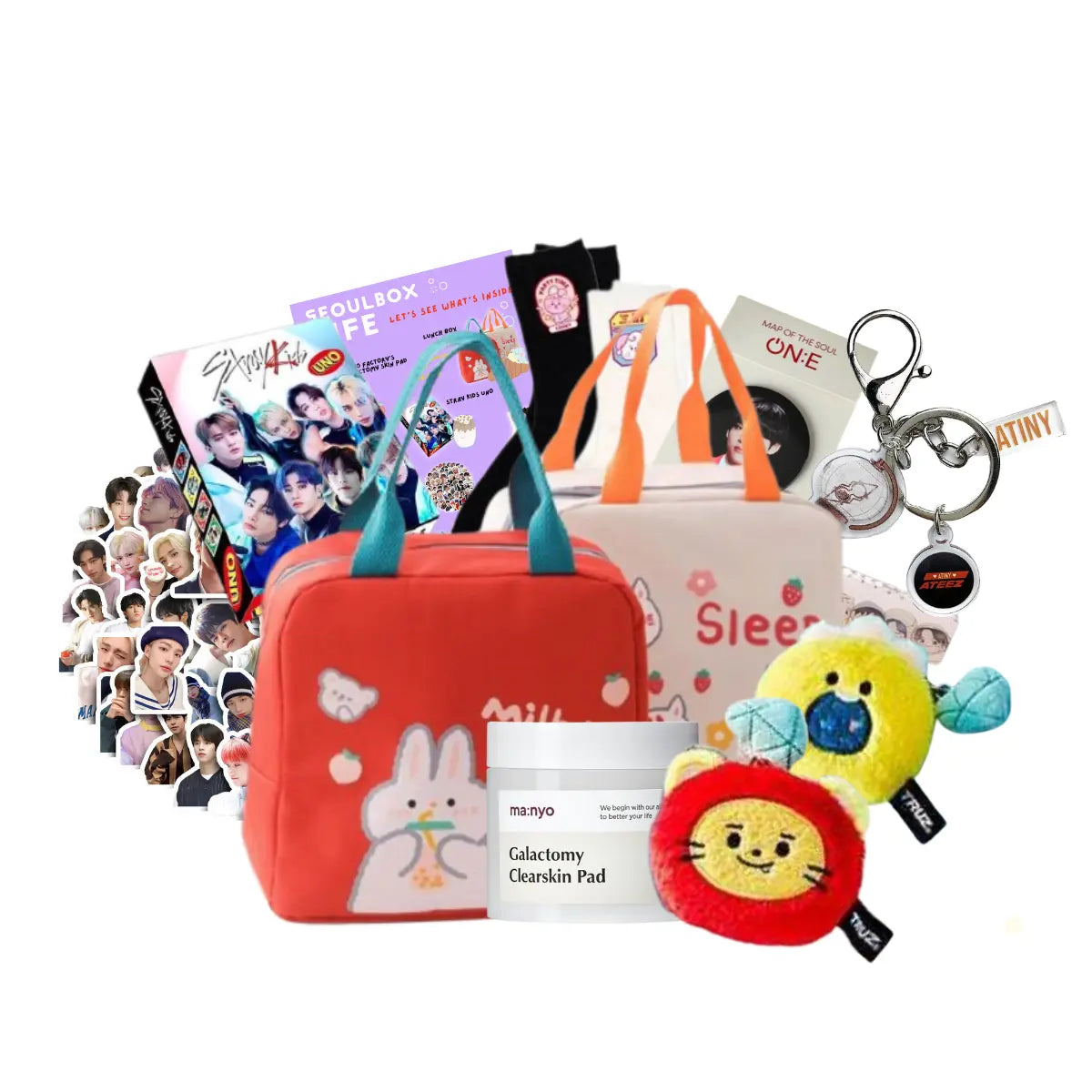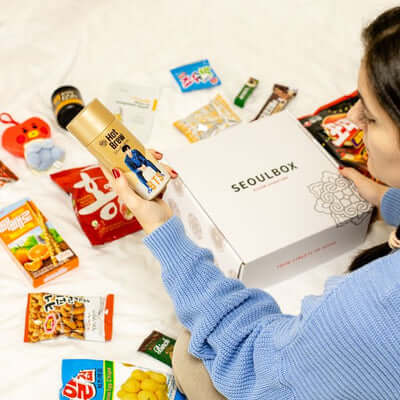KOREAN FESTIVAL FOODS
Korea has many different festivals with their own special cuisine. We’ve listed a few foods that everyone should eat at least once in their lives. They range from popular dishes to not-so-common ones, from savory to spicy to sweet.
Warning: don’t read this blog hungry!
Japchae (잡채)
 (Image: Credits to the rightful owner)
(Image: Credits to the rightful owner)
You’re probably already familiar with this glass noodle stir-fry. But did you know that japchae started out as a royal dish? It was first served to the king and his court, but it later became a beloved meal for commoners, too.
Japchae can be eaten hot or cold and made in big quantities, which means it’s perfect for banquets and potlucks. It’s also eaten on birthdays, especially the first (돌) and sixtieth (환갑)
ones, since the noodles represent a long life. There are many variations of japchae, including with mushrooms (버섯잡채) and wolgwa or pickling melon (월과채).
Miyeok-guk (미역국)
 (Image: Credits to the rightful owner)
(Image: Credits to the rightful owner)
When you think of birthdays, do you think of soup? If not, then you’re missing out. Koreans eat miyeok-guk after giving birth or for breakfast on their birthdays to pay respect to their mothers. Traditionally, it was also a symbol for the goddess Samsin Halmoni, who protected children from birth until they turned seven.
Miyeok-guk is made with sea mustard. Unlike most Korean soups, it’s not spicy. It can be eaten in beef or fish broth, often with rice. Some Koreans eat miyeok-guk for health reasons, including to lower cholesterol and increase their vitamin K content. This is one healthy soup you should start eating – and not just on your birthday!
Jeon (전)
 (L-R: Gogi-jeon, nokdujeon, hwajeon/Image: Credits to the rightful owner)
(L-R: Gogi-jeon, nokdujeon, hwajeon/Image: Credits to the rightful owner)
Did someone say pancakes? Jeon are savory pancakes that can be made with anything: seafood, bean sprouts, or meat. They’re a popular holiday food, especially for Chuseok and Seollal. Jeon can also be made with flowers and honey or jujube (hwajeon, 화전). They’re eaten on Buddha’s Birthday and Samjinnal. There’s something for everyone here.
Nokdujeon (녹두전)/Nokdu Bindaetteok (녹두 빈대) Recipe (from Korean Bapsang)
Ingredients
- 2 cups peeled and split mung beans, dried
- 8 ounces mung bean sprouts (sukju namul)
- 8 ounces kimchi
- 6-8 scallions
- 4 oz ground or finely chopped pork
- 2 tsps soy sauce
- 1 tsp garlic
- 1 tbsp sesame oil
- Salt
For the Sauce
- 2 tbsps soy sauce
- 1 tbsp vinegar
- 2 tbsps water
- A pinch of black pepper
- Optional: A pinch of gochugaru (red pepper flakes)
Steps
- Rinse and soak mung beans for 3-4 hours, then drain.
- Boil the mung bean sprouts for around 2 minutes. (You can skip this step.) Rinse in cold water; drain and squeeze out extra water gently.
- Slice the kimchi and scallions. Mix them with the bean sprouts, pork, soy sauce, sesame oil, and garlic in a large bowl.
- Grind 2 cups of soaked beans with ¾ cup cold water and ½ teaspoon of salt in a blender until coarse. Put them in the bean sprout mixture.
- Do the same thing with the other beans. Mix the batter until nice and even.
- Heat two or more tablespoons of vegetable oil over medium/medium-high heat in a non-stick pan. Ladle the bean mixture into the pan and spread into a round shape. Cook for 2-3 minutes, until the underside is golden brown. Turn over, add more oil, press down, and cook for 2-3 more minutes. Repeat until all of the mixture has been cooked.
- Make the sauce. Serve with the nokdujeon. Enjoy!
Craving some delicious Korean snacks? Get your own Seoulbox to celebrate the holidays!
Songpyeon (송편)
 (Image: Credits to the rightful owner)
(Image: Credits to the rightful owner)
Chuseok wouldn’t be complete without these sweets. Songpyeon was usually made with the newly harvested rice for the charye ceremony. They symbolized gratitude for the bountiful crops and to ask for good fortune for the coming year.
Typically, songpyeon is steamed in pine needles and stuffed with red bean paste or toasted sesame seeds. However, each province has its own variation. Jeju Island’s songpyeon has sweet pea filling, while Chungcheong Province makes pumpkin songpyeon. Traditional, beautiful, and delicious – what better way to celebrate Chuseok?
Tteokguk (떡국)
 (Image: Credits to the rightful owner)
(Image: Credits to the rightful owner)
We go from Chuseok to Seollal. Koreans typically eat tteokguk on New Year’s Day to add an extra year to their lifespan and get good luck. But you don’t have to wait for Seollal to eat this soup – tteokguk can be eaten any time of the year.
Tteokguk Recipe (from Maangchi)
Ingredients
- 1 lb sliced rice cakes (soak for 30 minutes in cold water and drain if frozen)
- 7 cups water
- ½ pound chopped flank steak or brisket
- 3-4 minced garlic cloves
- 1 dae-pa large green onion/3 green onions, sliced diagonally
- 2 tsps vegetable oil
- 2 eggs
- 1 tbsp fish sauce or soy sauce
- 1 tsp toasted sesame oil
- ½ tsp black pepper
- 1 sheet gim (seaweed)
- Optional: 1 chopped red pepper
- Salt
Steps
- Boil water over high heat. Cook beef and garlic for 5 minutes. Reduce heat to medium and cover. Cook 20-25 minutes, until beef is tender.
- Roast gim on both sides until crispy and bright green. Place in plastic bag and crush it.
- Separate egg yolks and whites. Add salt to both. Mix with a fork, taking away the chalaza (stringy bits) from the yolks.
- Put the vegetable oil in a non-stick pan that’s been heated. Swirl it around to cover the pan and wipe off the extra oil with a towel. Turn the heat off and add yolks to the pan, spreading them out evenly. Cook for one minute; flip the mixture over and cook another minute. Remove and slice into thin strips.
- Stir the rice cakes, sauce, and salt into the soup. Cover and cook 7-8 minutes, until the rice cakes float and are completely soft. Add the egg whites’ bit by bit and cook for 30 seconds.
- Now add the sesame oil, black pepper, and green onion. Stir and remove from the heat. Scoop into serving bowls and top with the egg strips, gim, and red pepper (optional). Enjoy!
Samgyetang (삼계탕)
 (Image: Credits to the rightful owner)
(Image: Credits to the rightful owner)
It’s the hottest day of the year – time to bring out the chicken! Koreans eat samgyetang, or ginseng chicken soup, during Sambok (삼복). The chicken is stuffed with rice, jujube, and garlic and boiled until fully cooked. Eaten since the Joseon Dynasty, Samgyetang is considered one of the best foods to fight fatigue and the heat.
Want something cold? Try naengmyeon (냉면), bingsu (빙수), or any of Korea’s cool summer drinks instead.
Ogok-bap (오곡밥)
 (Image: Credits to the rightful owner)
(Image: Credits to the rightful owner)
We’ll finish with a rice dish for Daeboreum. According to tradition, ogok-bap was created in honor of a crow who saved King Soji’s life. It contains glutinous rice, sorghum, red beans, black beans, and proso millet.
Ogok-bap is eaten with vegetables (boreum-namul, 보름나물) and nuts (bureom, 부럼) for good health and fortune. Nowadays, Koreans also eat it for its nutrient content and to fight diabetes and high blood pressure.
As you can see, some of the foods we talked about today are simple but have deep meaning. Some of them look easy to make and are packed with rich flavor. And all of them are proudly Korean.
Eating food is one of the best ways to experience Korean culture, especially during the festivals. Don’t be shy – give them a shot!
Author: SUJI SOHN
About the author: Suji was studying in London in the year 2019 and, although being separated from her family, her passion for Korea was growing. She noticed that a lot of her close friends loved Korean culture, food, music, and dramas and gradually started to fall in love with Korea, but there weren't many opportunities to actually "experience" this wonderful nation!
Suji was aware of what she needed to do to introduce Korea to her friends' lives and, conceivably, to those of everyone else who was curious about a piece of Daehan Min-guk.






